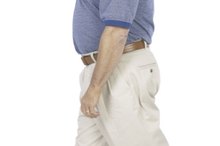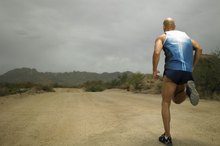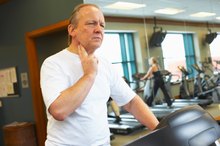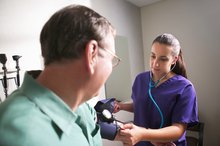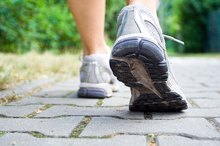Exercise to Improve Circulation in the Legs
It's pretty simple: Poor circulation means the blood in your body is not adequately flowing 3. The problem could be due to obesity, diabetes, smoking, heart disease, atherosclerosis or a lack of physical activity, but whatever the cause, the way to see improvement is to get the blood flowing. That means exercise.
If you are experiencing serious medical symptoms, seek emergency treatment immediately.
The Results of Exercise
Exercise promotes better blood flow. When you exercise, your lungs start taking in more air and your heart starts beating faster, thus delivering more oxygen to the rest of your body. Any activity that gets your heart beating faster will improve your circulation. As you continue to exercise over time, lots of beneficial things happen. For one, your heart becomes more efficient at pumping blood. Additionally, your cells become more efficient at using that oxygen.
- Exercise promotes better blood flow.
- For one, your heart becomes more efficient at pumping blood.
Before You Begin
Does Walking Help Get Rid of Excess Water in the Lungs?
Learn More
Any type of movement results in increased blood flow, so with that in mind, you could choose any type of exercise you enjoy. However, because poor circulation is often a symptom of other limiting health conditions, you might need to start out with some very basic activity. If you have chronic health issues, get your doctor's advice on the frequency, time and type of exercise that is best for you. Unless you have mobility issues, doctors typically recommend starting with walking.
- Any type of movement results in increased blood flow, so with that in mind, you could choose any type of exercise you enjoy.
- However, because poor circulation is often a symptom of other limiting health conditions, you might need to start out with some very basic activity.
Progressing with Walking
Walking is an ideal exercise because it doesn't require any special skills or equipment. It's also easy to choose the speed and intensity that works for you. And because it forces your leg muscles to contract, it promotes healthy blood flow to those limbs. Start your program by walking for as long as you're able; if that's only five minutes, that's OK -- the idea is to simply get moving at a pace that's comfortable for you. Ideally, you should be exercising about 30 minutes a day, but don't get hung up on the numbers just yet. Try walking for five to 10 minutes several times a day, and gradually add time as you're able, until you can manage 30 minutes at a stretch. For further improvements to your heart and cardiovascular function, add hills, walk faster or even alternate walking with jogging.
- Walking is an ideal exercise because it doesn't require any special skills or equipment.
- Try walking for five to 10 minutes several times a day, and gradually add time as you're able, until you can manage 30 minutes at a stretch.
Other Types of Exercise
Treadmill Walking and Blood Pressure
Learn More
If your poor circulation or other health issues make it difficult for you to walk, you do have other options. Stationary bicycling will get your heart pumping and force your leg muscles to work. If an upright bike causes you discomfort, try a recumbent-style stationary bike. As you get stronger and it gets easier to breathe and move around, try other forms of exercise. You might begin cycling to work or to the grocery store or using an elliptical trainer or stair stepper at your gym. Water aerobics and swimming are also beneficial for those who have joint pain or other conditions that make movement difficult.
- If your poor circulation or other health issues make it difficult for you to walk, you do have other options.
Related Articles
References
Writer Bio
Nicole Vulcan has been a journalist since 1997, covering parenting and fitness for The Oregonian, careers for CareerAddict, and travel, gardening and fitness for Black Hills Woman and other publications. Vulcan holds a Bachelor of Arts in English and journalism from the University of Minnesota. She's also a lifelong athlete and is pursuing certification as a personal trainer.
